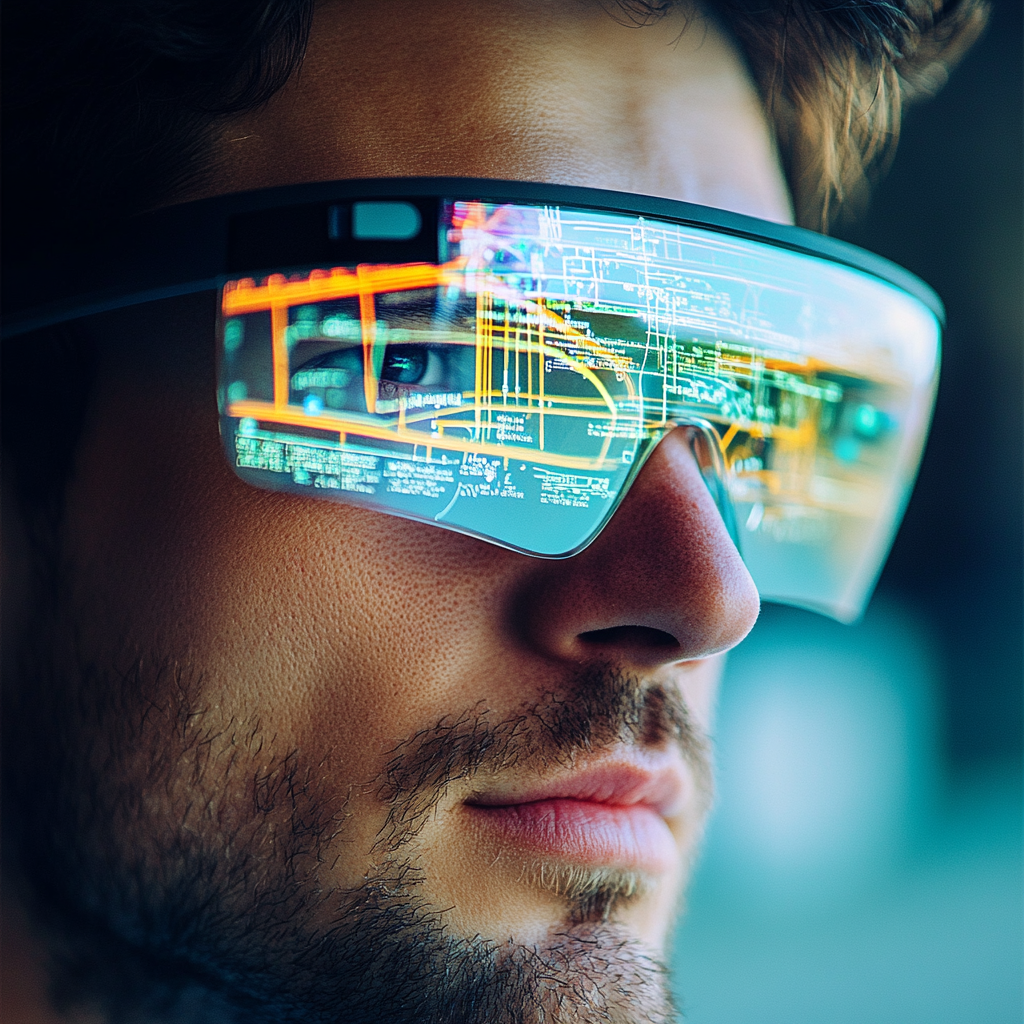Augmented reality (AR) is no longer science fiction. World-class companies — Apple, Meta, Google, Samsung and others — are actively investing in next-generation AR glasses. But the question remains: will they become a mass product like smartphones? Or will they remain a toy for tech enthusiasts?
What are AR glasses?
AR glasses are wearable devices that overlay digital information (3D objects, interfaces, text, images) directly on top of the real world. They operate on the basis of sensors, cameras and mini-displays, processing data in real time.
Apple Vision Pro: not just glasses, but a “spatial computer”
Apple presented its long-awaited new product — Apple Vision Pro. These are not exactly glasses, but rather an AR/VR mask capable of:
- projecting interfaces into real space,
- running applications in a 3D environment,
- tracking gaze, gestures, and voice.
But the main barrier is the price. Vision Pro costs from $3,499, which makes it inaccessible to the mass buyer in 2024.

Meta: from failure to new attempts
Meta, after the failure of Ray-Ban Stories and bulky VR helmets, is developing thinner, next-generation AR glasses with a neural interface. Their goal is to replace the smartphone:
- the interface is controlled by eyes and gestures,
- calls, notifications, search and navigation are right in front of your eyes,
- tight integration with the Meta ecosystem (Facebook, Instagram, WhatsApp).
What are other players doing?
- Google has returned to developing smart glasses after buying North. A new prototype is already being tested.
- Samsung is working on its own AR glasses, focusing on design and compatibility with Galaxy.
- Xiaomi, Oppo, TCL — Chinese manufacturers are actively experimenting with lightweight models for everyday wear.
Technical and social barriers
Why aren’t AR glasses in every home yet?
- Size — too bulky or weird looking.
- Battery — limited battery life.
- Price — too expensive for the mass segment.
- Content — lack of useful apps.
- Privacy — fear of being filmed without consent.
When to expect a mass boom?
Experts suggest that 2026–2028 could be a turning point:
- devices will become lighter and cheaper,
- more software and content for AR,
- growing interest in metaverses and 3D interfaces.
But for now, the key to success is convenience and practical benefits, not just a “wow effect”.
Augmented reality glasses are not just a gadget, but a possible successor to smartphones. But there is still time before the mass boom: users are waiting for lightness, autonomy and a price below $ 1000. For now, this is a market of early enthusiasts and experiments. But in the future, it is quite possible that we will live with digital screens right in front of our eyes.

Leave a Reply